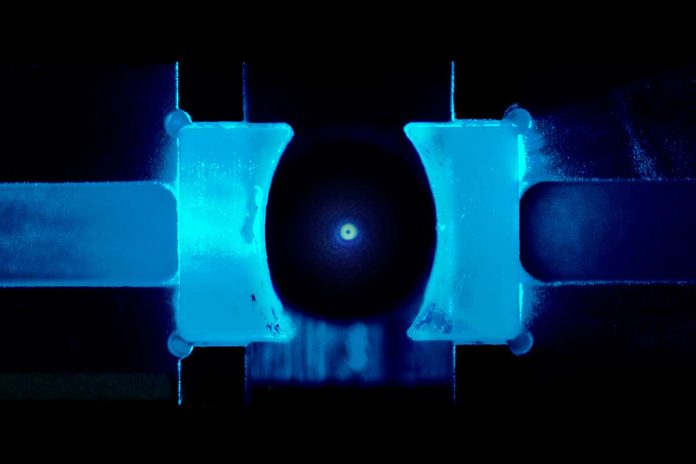[ad_1]

Kahan Dare, Lorenzo Magrini, Yuriy Coroli, University of Vienna
A new method for manipulating the quantum state of particles could one day allow us to observe an object in two places at once. The technique has been used to chill a tiny glass bead into its coldest possible quantum state.
Once you get down to extremely small scales, heat and motion are interchangeable: the more a particle is moving, the hotter it is. So to cool down a small particle, you have to stop it moving. Because the rules of quantum mechanics mean you can never know exactly how fast a particle is moving, there is a limit to how cold a particle can get. When a particle is at that limit, we call it the particle’s ground state.
Markus Aspelmeyer at the University of Vienna in Austria and his colleagues used a single laser to cool down a 150-nanometre-wide glass particle into its ground state. “In other methods there are always several lasers and a complicated apparatus, but in this case it’s just one laser and the particle,” says Aspelmeyer. “That is the beauty of this method.”
Advertisement
The laser levitates the particle using an effect called optical trapping in which the light interacts with the particle to hold it in place. Mirrors either side of the particle cause the light to overlap and interfere with itself.
This interfering light can only exist in certain frequencies, according to quantum mechanics. That allows the researchers to select the precise frequency of light that hits the particle. As the particle vibrates back and forth, some frequencies of light speed it up by imparting small amounts of energy, while others slow it down by removing energy.
If only the frequencies that slow the particle down are allowed, it will keep getting colder until it reaches its ground state. In the experiment by Aspelmeyer and his team, this occurred at a temperature of 0.000012 kelvin (about -273°C), just a fraction above absolute zero, the minimum temperature possible.
Similar methods have been used to cool gases, but never solid particles. This technique could eventually be used to create a quantum state in which a solid object occupies two places at once, known as a spatial superposition, says Aspelmeyer.
“Other cold-atom experiments can also create superpositions and quantum states, but what they can never do is create a superposition of all of the atoms in one place and all of the atoms in another place,” says Aspelmeyer. The particle in this experiment had around 100 million atoms.
Cooling solids and measuring their quantum state is important to the researchers’ ultimate goal of investigating the quantum properties of gravity, because it is much easier to test the gravity of a compact solid than a diffuse gas. Such a set-up could let us test whether the gravity of the object is similarly in two places at once and how gravity applies to quantum objects more generally.
Journal reference: Science, DOI: 10.1126/science.aba3993
More on these topics:
[ad_2]
Source link











